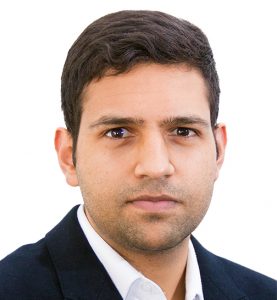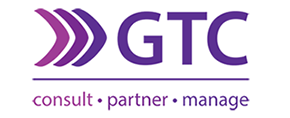Active vs. passive investing: What really matters?
 Samir Narotam
Samir Narotam
Portfolio Manager
_______________________________________________________________________________________________________
The perennial debate – which is better – active asset management or should you use passive asset management?
As your dedicated asset manager, GTC wants to provide a clearer understanding of two primary approaches
to investment fund management: active and passive. While both strategies aim to grow your capital, they differ significantly in their methodology, risk exposure and potential outcomes. Our primary objective at GTC and as a multi-manager, is to optimise your portfolio’s growth and navigate market complexities effectively.
To that end, we have provided a focused perspective on the strategic rationale behind our emphasis on optimal investment management rather than purely active or purely passive management.
Passively managed funds: Following the market
Imagine a boat simply going with the flow of the ocean. That’s essentially how passively managed funds, often called index funds or exchange-traded funds (ETFs), operate. They aim to replicate the performance of a specific market index, such as the S&P 500 (offshore equity index) or the FTSE/JSE All Share Index (local equity index) or a blended combination of various indices.
Their inherent design focuses on achieving market-level returns by holding constituents in proportion to the index. In other words, they hold the same securities in the same proportions as the index, consequently experiencing every sell-off of the underlying index. Because the fund’s composition is largely predetermined, the management fees associated with passive funds are typically lower. When some passive funds do include a degree of enhancements, they charge additional fees for these services.
Actively managed funds: Seeking to outperform
Now, picture a skilled captain navigating their boat, actively adjusting course to find the fastest currents and avoid obstacles. This analogy represents actively managed funds. These funds have a dedicated team of investment professionals – the fund manager and their analysts – who conduct in-depth research and analysis to identify securities they believe will outperform the broader market.
The goal of active management is not just to match the market’s returns, but to exceed them (ie alpha generation). Fund managers make strategic decisions about which securities to buy, sell, and when, based on their market outlook and individual company analysis. This active decision-making process is where the potential for generating superior returns lies. This too comes with risk of the selected positions underperforming by more than the broad market index.
Strategic rationale for the combined approach
GTC, as a multi-manager adopts an approach centered on optimal fund management. This involves the application of rigorous fundamental and quantitative analysis to identify the investment opportunities with the potential to outperform relevant targets. Through diligent research, proprietary insights, and dynamic portfolio adjustments, we employ a combination of active and passive management as we aim to generate alpha while carefully managing risk.
We believe that in the current market landscape, characterised by both opportunities and complexities. Actively selecting the most suitable strategy based on the prevailing market condition provides distinct advantages that are crucial for achieving the funds’ objectives:
- Capitalising on market inefficiencies: Financial markets are not always perfectly efficient. Where efficient, passive management often makes more sense and where not, skilled active managers can exploit these inefficiencies – arising from factors like informational advantages, behavioural patterns, and overlooked catalysts – to identify undervalued assets and generate returns beyond passive benchmarks.
- Proactive risk mitigation: Active management allows for dynamic adjustments to portfolio allocations in response to evolving macroeconomic factors, geopolitical events, and specific security risks. This agility enables us to proactively manage downside exposure in a way that is not inherent in static, index-replicating strategies.
- Navigating market volatility: Market fluctuations and periods of uncertainty often create tactical opportunities for active managers with a well-defined investment process and a long-term horizon. Our ability to strategically rebalance portfolios during such times can be a significant driver of enhanced returns.
- Fundamental research and due diligence: Our investment process is underpinned by in-depth fundamental research, rigorous due diligence, and a comprehensive understanding of the competitive landscape. This intensive analysis aims to identify sustainable growth drivers and potential risks that may not be readily apparent in off the shelf pure market index linked funds.
- Alpha generation: GTC’s central goal is to generate consistent alpha – risk-adjusted returns that demonstrably exceed the performance of relevant target. We believe that our focused on identifying and capitalizing on compelling investment opportunities across the entire investable universe, provides the optimal pathway to achieving this.
While active management entails higher management fees to compensate for the extensive research capabilities, expertise, and active decision-making involved, we firmly believe that the potential for significant outperformance and sophisticated risk management justifies this cost. Our portfolio construction methodology prioritises the selection of strategies with proven track records, clearly articulated investment philosophies, and demonstrable expertise within their respective asset classes.
We are confident that this approach offers the greatest potential for superior long-term investment outcomes.







